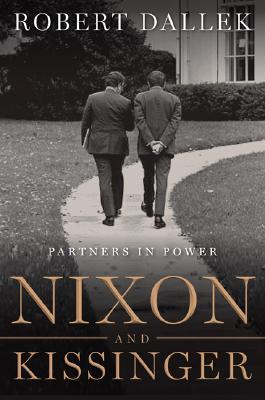Donald Trump believes that any and all bad news makes him look bad. So he denies everything bad, ignores everything bad, and carries on as normal while the world burns around him. This is not a President that surrounds himself with good people, who help him to make good decisions. Because if there are good people around him, they are being ignored daily. If Nero fiddled while Rome burned, Trump writes self-congratulatory tweets while America burns.
his presidency has in many ways been defined by his dismissal of many of the biggest threats facing the United States. His preoccupation with demonstrating strength or rearranging facts to reinforce his worldview has led him, time and again, to downplay, ignore or mock everything from climate change to Russian interference in the American political process.
Mr. Trump’s own Pentagon declared in a report last year that a warming climate was a major “national security issue” that could spur future instability around the globe, but to Mr. Trump it remains a theory, something to be stricken from government reports and explained away when the West erupted in wildfires.
His intelligence agencies have assessed that North Korea’s nuclear stockpile has expanded significantly on Mr. Trump’s watch. But to the president, that arsenal — which he said in 2017 might force him to take military action leading to “fire and fury like the world has never seen” — is hardly worth mention today. Asked about it, he invariably turns the conversation to his relationship with Kim Jong-un, the North Korean leader.
The unremitting stream of cyberattacks by Russia, many aimed at the heart of the American political process, has preoccupied intelligence and military officials determined to keep Vladimir V. Putin from interfering in another election. But not Mr. Trump, who has said he has no reason to disbelieve the Russian leader’s denials that Moscow was involved.
On virtually every front, said Richard Haass, the president of the Council on Foreign Relations, Mr. Trump has embraced “denialism,” as if wishing problems away was a substitute for policy and action.
“The denialism is a pattern,” said Mr. Haass, who served several Republican presidents at the National Security Council and the State Department. “It is pervasive. And the fear among friends and allies is that all this is not limited to Trump but reflects how this country has not just changed, but changed for the worse.”
“They have put their security in our hands,” said Mr. Haass, the author of “The World: A Brief Introduction,” “and they are questioning that wisdom, at the same moment that our adversaries see us as divided and distracted.”
It is a distinctive pattern that began in the Trump administration’s first hours, when the new president bristled at photographs released by the National Park Service that suggested the crowds at his inauguration paled when compared with the turnouts for the swearing-in of some past presidents, including Barack Obama. Then came his search for three million fraudulent votes — all in the service of denying that he had lost the popular vote, even while winning the Electoral College.
Some of the moments were laughable, like the Sharpie used to alter National Weather Service maps of the course of Hurricane Dorian last year, all to justify Mr. Trump’s erroneous declaration that the storm was headed to Alabama.
It was great fodder for late-night comedians. Then, in March, as the virus emptied out offices and began to strike American cities, denialism went from deadly serious to simply deadly.
Mr. Trump’s own Department of Health and Human Services, with the help of the White House staff, had prepared for an influenza pandemic that many experts had viewed as inevitable. They had even run a monthslong exercise, code-named “Crimson Contagion,” that mapped out how the government needed to respond if a virus — somewhat different from the coronavirus — that originated in China came to American shores aboard direct flights, borne by tourists, students, business executives and returning Americans.
But the tabletop exercise missed one key element: a president who made it clear he didn’t want to hear news that imperiled economic expansion, especially in an election year.
“Nobody ever thought of numbers like this,” Mr. Trump said in mid-March, as his early story that the virus was under control began to collapse around him.
In fact, they had — it was simply that Mr. Trump did not want to acknowledge those numbers. He kept downplaying the casualties, saying he was sure that deaths would top out below 60,000 and creating a White House culture where mask-wearing was equated with weakness, rather than the pandemic equivalent of strapping on seatbelts.
Mr. Trump has also seemed incapable, or at least unwilling, to acknowledge the cost of denying reality. He continues to insist the economy will have a “V shaped” recovery, even though the Federal Reserve chairman he appointed, Jerome Powell, said on Tuesday that Americans should brace for a “longer-than-expected slog back to full recovery.”
